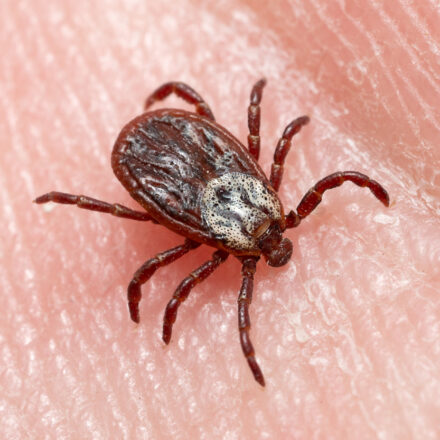Clinton County Enters Tick Season
 Clinton County, April 29, 2025. The Clinton County Health Department (CCHD) reminds residents to be on the lookout for ticks. Ticks can spread diseases that make people and pets very sick. They are most often found in shady, moist areas at ground level. They cling to tall grass, brush and shrubs, usually no more than 18-24 inches off the ground. They also live in lawns and gardens, especially at the edges of woods and around old stone walls. Ticks can enter your yard through woods, tall grass or small animals or birds.
Clinton County, April 29, 2025. The Clinton County Health Department (CCHD) reminds residents to be on the lookout for ticks. Ticks can spread diseases that make people and pets very sick. They are most often found in shady, moist areas at ground level. They cling to tall grass, brush and shrubs, usually no more than 18-24 inches off the ground. They also live in lawns and gardens, especially at the edges of woods and around old stone walls. Ticks can enter your yard through woods, tall grass or small animals or birds.
“Now that temperatures are consistently above 40⁰F, we should expect to see ticks throughout our region,” explained Nichole Louis, RN, BSN, Director of Health Care Services at CCHD. “This is when adult ticks that survived the winter will start to emerge. We will see nymphs as the summer goes on and will continue to see both through the end of the fall.”
The most common type of tick found in our region is the deer tick. Adult deer ticks can be the size of a sesame seed, while nymph, or baby, deer ticks can be as small as a poppy seed.
“The first step in preventing tick bites and tick-related illness is to avoid ticks and the places we know they like to be,” explained Ms. Louis. “When possible, stay away from places where ticks are normally found. If you are walking, hiking or biking, stay toward the center of the path and avoid dense woods and bushy areas.”
Other prevention measures include:
- Use an EPA (Environmental Protection Agency) approved insect repellent that contains DEET, picaridin, IR3535, oil of lemon, eucalyptus or 2-undecanone.
- Cover your skin as much as possible. Wear enclosed shoes, long pants and a long-sleeved shirt. Tuck pant legs into socks or boots and shirt into pants.
- Wear light-colored clothing with a tight weave to spot ticks easily.
- Treat clothing and gear (such as boots, pants, socks, and tents) with products containing 0.5% permethrin. Never apply permethrin directly to skin.
- Cover baby carriers and strollers with mosquito netting.
- Stay away from animal nests and teach children to do the same.
Even with your best prevention efforts, you may still come into contact with ticks. Make frequent tick checks routine for everyone in your family—including pets. Pets that spend time outdoors can bring ticks indoors, putting you at risk, even if you haven’t spent time outdoors yourself. Tick checks should include key areas ticks like to hide, such as under the arms, in and around the ears, inside the belly button, behind the knees, between the legs, around the waist, and on the hairline and scalp. Taking a shower as soon as possible after spending time outdoors can also help to wash away unattached ticks. When spending time outdoors, check for ticks frequently so you can remove them before they have a chance to bite you or your family members.
“If you have been bitten by a tick, be sure to tell your doctor and be on the lookout for symptoms,” added Ms. Louis. “The most common symptoms of tick-related illnesses include: fever and/or chills; aches and pains; and a rash.”
To learn more about tick, tick-borne illnesses, and how to prevent them, visit https://health.clintoncountyny.gov/nc_healtheffect/Ticks.pdf.
Posted: April 29th, 2025 under Adirondack Region News, Environmental News, Heathcare News, Northern NY News.
